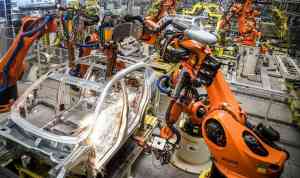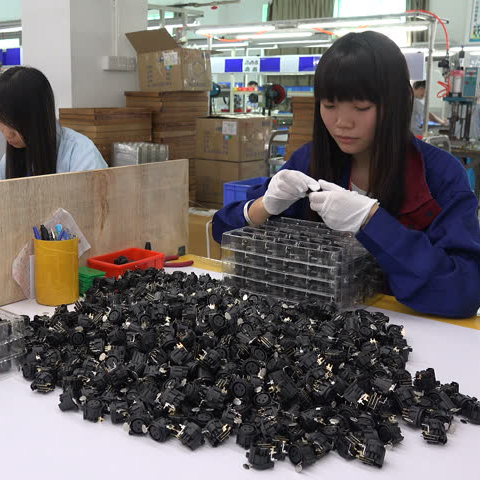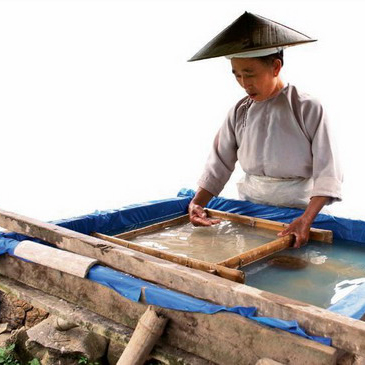Headlines Questioning Chinese Product Quality Will Continue
Headlines Questioning Chinese Product Quality Will Continue

There is no underlying reason why products manufactured in China should be of lesser quality than similar products manufactured in more mature economies elsewhere in the world.
Chinese technology has advanced rapidly over the last few decades, an advance no more vividly demonstrated by way of a Chinese launched, and Chinese operated, robotic lander on the far side of the moon, currently conducting research that may one day help lead to the development of a permanently manned lunar base.
 To possess the cutting-edge technology necessary to place a robot on the moon should conclusively disprove the notion that Chinese products are inherently inferior. Of course, this is just one example but, for anyone who has seen and experienced Chinese infrastructure in terms of architecture, transportation, manufacturing facilities, and scale, etc., they also should know there is no underlying reason why any of the products made in China should be inferior.
To possess the cutting-edge technology necessary to place a robot on the moon should conclusively disprove the notion that Chinese products are inherently inferior. Of course, this is just one example but, for anyone who has seen and experienced Chinese infrastructure in terms of architecture, transportation, manufacturing facilities, and scale, etc., they also should know there is no underlying reason why any of the products made in China should be inferior.
200 million iPhones are made in China every year. How many other globally recognized, high-tech, mass-market devices are produced with such consistently high-quality anywhere else in the world? Except, perhaps, for ink and laser cartridges already manufactured in China by various OEMs!
So, why is it, in our less than glamorous world of ink and toner, that we constantly experience new headlines for poor-quality aftermarket cartridges coming out of China? Whether it is for claims of poor print performance, infringement of third-party intellectual property, toxic materials in plastics, carcinogens in the toner powder, etc., the list of headlined deficiencies seems never-ending.
The reasons for this are two-fold.
First, because some of the products are undoubtedly poor-quality and regardless of how isolated these occurrences may be, they represent a shortcoming that justifies some of the headlines and, second, because Chinese new-build cartridges (NBC’s) are a disruptive threat toward the old order.
Let’s deal with these two sets of circumstances separately.
We all know that prices (for example in the Amazon marketplace) for new-build cartridges are often at, or below, what we would expect the bill of material (BOM) cost to be. This means two things. Firstly, manufacturers are skimping on the materials to reduce the cost and, secondly, poor-quality (inconsistent) products, that didn’t meet their original customers’ requirements are being liquidated, at or below cost, rather than being re-worked or destroyed.
We all know, at least for the three or four Chinese top-tier manufacturers (with a combined market capitalization in excess of US$4 billion), there’s no excuse for an inferior design that results in poor-quality performance, and there’s no excuse for ignoring the build requirements necessary to consistently meet a specified performance standard.
There is no reason why a Chinese new-build cartridge from a top-tier manufacturer should not consistently match the performance of an original brand cartridge.
Few should doubt the ability of a top-tier Chinese manufacturer to develop a specification for manufacturing a product that is at least the equivalent, in terms of performance, to that of the original brand product it’s designed to replace. However, more may doubt the commitment, or current ability, of a top-tier manufacturer to utilize technology to ensure it consistently meets that manufacturing specification.
Technology may, for example, involve the use of robotics designed to eliminate human error in the manufacturing process but, perhaps more importantly, it may also require the use of information technology to help manage (for example) the raw material supply chain. If the right materials are not in the right place at the right time, how often may an agreed bill of materials have been sacrificed to meet a customer committed delivery date rather than delaying production until the specified components become available?
Whichever way you look at it, it’s no good spending money implementing world-class Enterprise Resource Planning (ERP) software, and then limiting its use to store data that is later downloaded into Excel spreadsheets for mission-critical operating decisions. This approach doesn’t work, it sidesteps the controls and efficiencies that effective use of software brings and can often be a shortcoming responsible for inconsistent product quality.
If the Chinese manufacturers wish to remove themselves as targets for headlines denouncing the performance of their products, then they must implement the processes and discipline necessary to achieve consistent quality performance.
Until enough controls and processes are in place to prevent these issues, those who stand to lose the most from the threat of disruption will continue to do everything possible to exploit the weaknesses. This will be accomplished, at least in part, by sponsoring headlines designed to cast doubt on the capabilities of the potential disruptors. It’s no different from the Tesla detractors headlining a negative story about an auto-pilot incident, the Airbnb detractors headlining a client who trashed a room, or the Uber detractors headlining a rogue driver incident. Those who stand to lose the most will invest some of their profits to highlight incidents that harm the reputations of the disruptors because this is where the greatest threat to their future profit comes from.
However, it’s not just the negative headlines centered around product quality that serve to limit market penetration of Chinese built alternative cartridges. There’s a legacy distribution system in place that protects the existing manufacturers, the wholesalers, the distributors, and the buying groups, and that serves to protect the old order to the detriment of the resellers and their customers. Until alternative technology is available to the resellers that allow them and their customers to “pull” the products they prefer instead of being “pushed” the ones their suppliers are currently motivated to provide, Chinese alternatives, regardless of their quality, are likely to continue to experience limited success.
If technology solutions become available which are subsequently embraced by the resellers, the barriers that have helped preserve the legacy players’ market share are more likely to be broken down. However, even if these technology developments do occur, it will be to no avail unless the Chinese-manufactured alternatives that could, in these circumstances, finally be facilitated into the distribution network are not 99.9 percent reliable, 99.9 percent of the time.
 Who is Ian Elliott? Did you find this article, Headlines Questioning Chinese Product Quality are Likely to Continue, helpful? Please comment below.
Who is Ian Elliott? Did you find this article, Headlines Questioning Chinese Product Quality are Likely to Continue, helpful? Please comment below.
Search and read Ian’ s blogs. Visit his E&S Solutions website. You can also contact Ian by email or by phone at +1(615)478-3544







Leave a Comment
Want to join the discussion?Feel free to contribute!